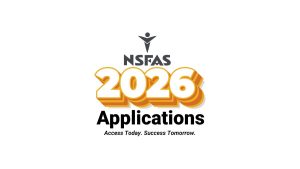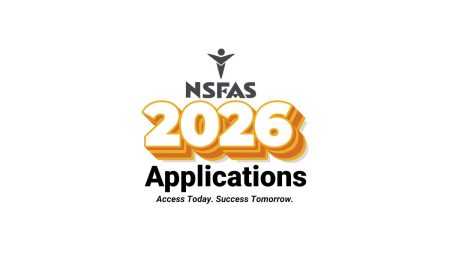If you’ve been rejected by the National Student Financial Aid Scheme (NSFAS), it can feel like a huge setback, especially when you’re hoping to pursue your studies without the financial burden. However, being rejected doesn’t mean that all hope is lost. There are ways to rectify the situation and reapply for NSFAS funding.
This article will guide you through the steps you can take to reapply for the National Student Financial Aid Scheme, as well as important factors to consider during the process.
1. Understanding the NSFAS Rejection
Before you start reapplying, it’s important to understand why your initial application might have been rejected. There are several common reasons for rejection:
- Incomplete Application: Missing or incorrect documentation can cause your application to be rejected.
- Failure to Meet Eligibility Criteria: If you don’t meet the academic or financial requirements, your application could be turned down.
- Incorrect Information: If there was incorrect or misleading information provided in your application, NSFAS could reject it.
- Late Application: Missing the deadline is another reason why applications may be rejected.
You can view the reason for your rejection by logging into your NSFAS account. This is critical as it will guide you on what to address before reapplying.
2. Steps to Reapply for NSFAS Funding
If you’ve been rejected by NSFAS, don’t panic. There are steps you can take to improve your chances the next time. Follow these steps to reapply effectively:
Step 1: Review Your Rejection Reason
Log into your NSFAS account and find out why your application was rejected. If you’re unsure or need more clarification, you can contact NSFAS through their helpdesk. Make sure you address the issue that led to your rejection.
Step 2: Correct the Issues
If you were rejected due to missing documents or incorrect information, gather all necessary paperwork. This may include:
- A certified copy of your ID
- Proof of income (parent’s or guardian’s income statement, if applicable)
- Bank statements
- Your academic results
- Proof of residence
Ensure that your documents are correctly scanned and meet NSFAS’ requirements (e.g., they must be certified, clear, and up-to-date).
Step 3: Ensure You Meet Eligibility Criteria
Review the NSFAS eligibility criteria again to ensure you meet all requirements. NSFAS funding is generally available to South African citizens who:
- Are studying or intending to study at a public university or TVET college in South Africa.
- Come from a household with a combined annual income of R350,000 or less.
- Have a good academic record and meet the minimum academic requirements set by National Student Financial Aid Scheme.
If you don’t meet the criteria, you may need to explore other options for funding, such as scholarships or bursaries.
Step 4: Gather Supporting Documents
Ensure you have all necessary supporting documents in place, including proof of income, academic transcripts, and any other documents required by the NSFAS system.
Step 5: Submit the Reapplication
Go to the official NSFAS website (www.nsfas.org.za) and start your reapplication process. Carefully follow all the steps in the application form and double-check all your information. This process is done online, so be sure to have an active internet connection.
Step 6: Monitor Your Application Status
After you submit your reapplication, it’s important to regularly check your application status. NSFAS will notify you if there are any issues or if further information is required. You can log in to the NSFAS portal to check your application status.
3. Important Things to Know When Reapplying for NSFAS
1. Apply Early
National Student Financial Aid Scheme funding applications typically open in August or September each year. To ensure you don’t miss the deadline, make sure you apply as soon as the application window opens.
2. Appeal Process
If you feel that your rejection was unfair or due to an error, you can lodge an appeal. You can find the appeal option in your NSFAS online account. National Student Financial Aid Scheme will review your appeal and give you feedback.
3. Multiple Reapplications
If your National Student Financial Aid Scheme application was rejected, you are allowed to reapply in future application cycles. There is no limit on how many times you can apply, but it’s important to address any previous issues that led to rejection.
4. NSFAS Bursary Coverage
The National Student Financial Aid Scheme bursary covers tuition fees, registration fees, and allowances for books, accommodation, and transport. Make sure to understand what the bursary will cover and any limits to these funds.
5. Alternative Funding Sources
While reapplying for National Student Financial Aid Scheme, it’s also wise to explore other funding opportunities, such as:
- University scholarships
- Bursaries from companies
- Department of Higher Education and Training (DHET) funding
- Private student loans
Make sure to apply for other funding options while waiting for NSFAS’ response.
4. Common Mistakes to Avoid When Reapplying for NSFAS
When reapplying, it’s crucial to avoid common mistakes that might delay your approval. Some of these include:
| Mistake | What to Do |
|---|---|
| Submitting incomplete documents | Double-check that you’ve submitted all required documents and they’re certified. |
| Not meeting the financial eligibility criteria | Ensure your household income is within the NSFAS threshold. |
| Incorrectly filling in the online application | Fill out all sections carefully, ensuring the accuracy of every detail. |
| Missing the application deadline | Apply early to avoid being late. |
| Not checking your email or NSFAS portal for updates | Regularly check your email for notifications from NSFAS and keep an eye on your NSFAS portal. |
5. What Happens After You Reapply?
After you’ve submitted your reapplication, National Student Financial Aid Scheme will review it based on your eligibility and the documentation you’ve provided. If your reapplication is successful, you will receive an approval notification, and the funds will be disbursed to your institution.
If your reapplication is still unsuccessful, you may appeal the decision, or look into other funding options for your education. However, make sure that you understand why your application was rejected again so that you can address the issues more effectively next time.
Check also: NSFAS Allowance for Students with Disabilities: What You Need to Know
Reapplying for National Student Financial Aid Scheme funding after rejection is not an insurmountable task. By following the outlined steps, ensuring all required documents are in order, and addressing any reasons for your rejection, you’ll increase your chances of securing funding. Remember to also explore other funding options and make sure you apply early to avoid missing deadlines.
Lastly, even if National Student Financial Aid Scheme doesn’t work out for you, don’t give up on your academic dreams. There are plenty of other opportunities to help fund your education. Stay persistent, keep searching, and the right opportunity will come!










